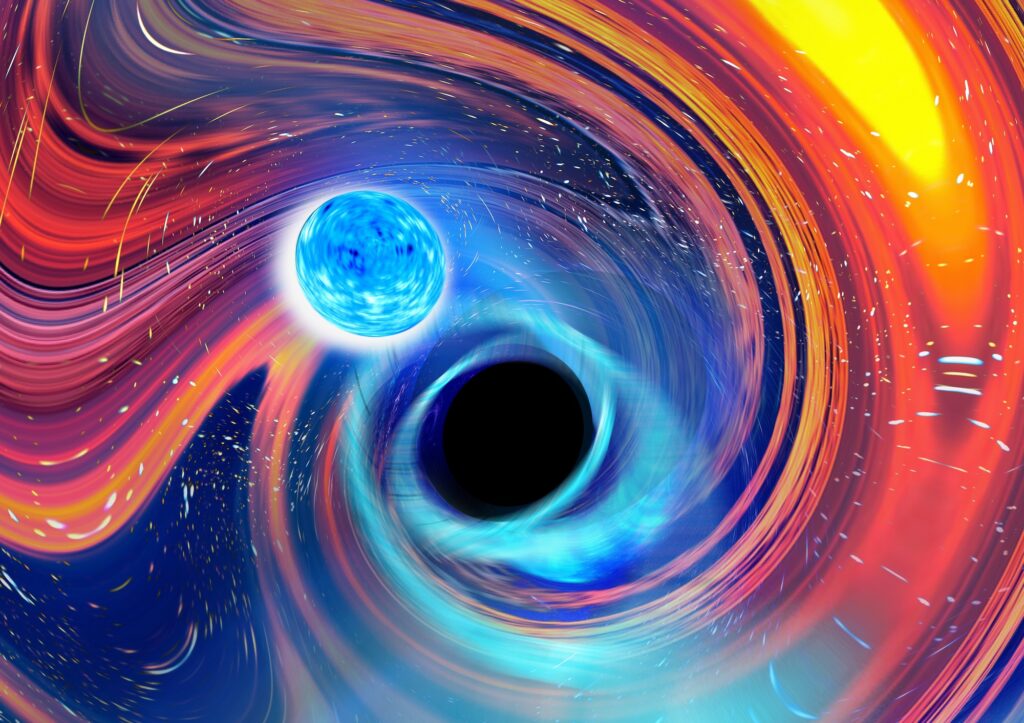Galactic collisions, meteor impacts and even stellar mergers are not uncommon events. neutron stars colliding with black holes however are a little more rare, in fact, until now, we have never observed one. The fourth LIGO-Virgo-KAGRA observing detected gravitational waves from a collision between a black hole and neutron star 650 million light years away. The black hole was tiny though with a mass between 2.5 to 4.5 times that of the Sun.
Neutron stars and black holes have something in common; they are both the remains of a massive star that has reached the end of its life. During the main part of a stars life the inward pull of gravity is balanced by the outward push of the thermonuclear pressure that makes the star shine. The thermonuclear pressure overcomes gravity for low mass stars like the Sun but for more massive stars, gravity wins. The core collapses compressing it into either a neutron star or a black hole (depending on the progenitor star mass) and explodes as a supernova – in the blink of an eye.
In May 2023, as a result of the fourth observing session of the LIGO-Virgo-KAGRA (Laser Interferometer Gravitational Wave Observatory-Virgo Gravitational Wave Interferometer and Kamioka Gravitational Wave Detector) network, gravitational waves were picked up from a merger event. The signal came from an object 1.2 times the mass of the Sun and another slightly more massive object. Further analysis revealed the likelihood that one was a neutron star and the other a low mass black hole. The latter falls into the so called ‘mass gap’, more massive than the most massive neutron star and less massive than the least massive black hole.
Interactions between objects can generate gravitational waves. Before they were detected back in 2015, stellar mass black holes were typically found through X-ray observations. Neutron stars on the other hand, were usually found with radio observations. Between the two, was the mass gap with objects lacking between three and five solar masses.
It has been the subject of debate among scientists with the odd object found which fell within the gap, fuelling debate about its existence. The gap has generally been considered to separate the neutron stars from the black holes and items in this mass group have been scarce. This gravitational wave discovery suggests maybe objects in this gap are not so rare after-all.
One of the challenges of detecting mass gap objects and mergers between them is the sensitivity of detectors. The LIGO team at the University of British Columbia researchers are working hard to improve the coatings used in mirror production. Enhanced performance on future LIGO detectors will further enhance detection capabilities. It’s not just optical equipment that is being developed, infrastructure changes are also being addressed including data analysis software too. Improving sensitivity in all aspects of the gravity wave network is sure to yield results in future runs. However for now, the rest of the first half of the observing run needs analysing with 80 more candidate signals to study.
Source : New gravitational wave signal helps fill the ‘mass gap’ between neutron stars and black holes

